Best Smartphone for Video Recording & Filmmaking 2022
The year is coming to an end. Another year of a multitude of different smartphones with new camera features and smartphone video capabilities. So, let’s look back and see which are the best smartphones for shooting video as we head into 2022.
What were the big innovations this year and were they as good as claimed?
Has the iPhone’s new Cinematic Mode changed the language of film? Will the Google Pixel’s crazy zoom make you a better filmmaker? Is Sony’s Xperia Pro-I main sensor really 1 inch? Has Xiaomi taken over from Samsung as the best android video shooter?
As well, I’ll talk about last year’s innovations and whether they turned out to be the world changing revolutions in videography that were promised. Let’s find out…
1. iPhone 13 Range
The iPhone 12 range came with Dolby Vision as the big innovation. This allowed iPhone users to shoot video with the enhanced dynamic range as well as in 10-bit colour. The video looked beautiful, so why isn’t the world full of Dolby Vision already?
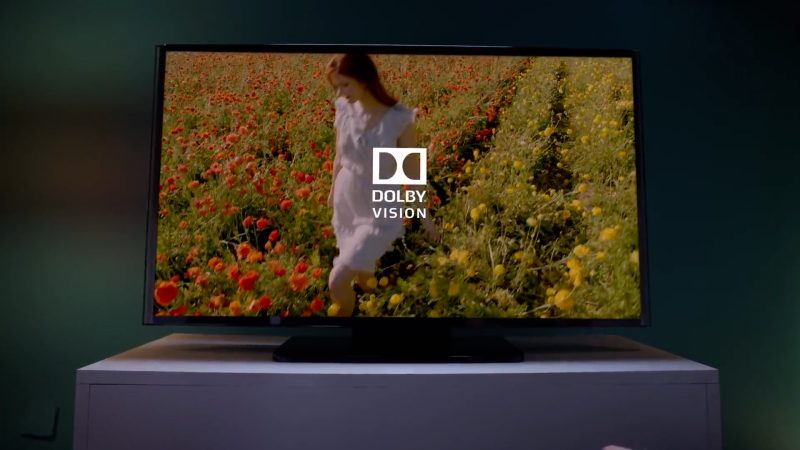
The problem was, Dolby Vision is a little bit tricky to edit and colour grade. For example, Adobe Premiere Pro still doesn’t really handle it very well. Final Cut Pro and LumaFusion are both fine though, as you would expect from Apple only platforms.
The other problem is that to view Dolby Vision you need a compatible monitor and a compatible platform. People viewing with non-compatible monitors might get a poor viewing experience. And this was enough to persuade most people it wasn’t worth the risk.
That said, I do think tech like Dolby Vision is the future. If you’ve been lucky enough to view a movie at the cinema in Dolby Vision, you will know what I mean.
Cinematic Mode
The innovation which made all the noise after the launch of the iPhone 13 range was the introduction of Cinematic Mode.
The one major quality of video shot using a regular camera with proper lenses is what has become known as the “bokeh effect”. This is when the subject is in focus but the background is blurry. Thing is, you still really do need a big sensor, a wide aperture and a big long lens to achieve, which is basically impossible in a device which is flat and fits in your pocket.
We’ve already had portrait mode for smartphone video in various devices, which attempts a very crude imitation. But Cinematic Mode is a bit more advanced, with Apple even claiming it would “change the language of cinema”.
Essentially, this mode was already available in the iPhone 12, if your device came with a LiDAR scanner and you downloaded an app called Focos Live. For the iPhone 13, Apple decided to use the idea themselves, whilst making some big improvements to the technology. Cinematic Mode uses the iPhone’s LiDAR scanner to create a 3D map to create a fake shallow depth of field.
Language of Cinema Changed?
Apple’s demo videos were impressive. And the automatic focus pull feature looked really fun and potentially game changing. But then came the downsides.
Firstly, Cinematic Mode is currently limited to 30fps and 1080p resolution, which just seems wrong when just about every movie in the cinema is shot at 24fps. As well, you are not able to lock white balance in this mode.
And ultimately, the 3D scanning tech is not 100% accurate. Things like hair and glasses worn by a subject aren’t mapped correctly, leading to a less than ideal look. Also, like with the Focos Live, Cinematic Mode simply doesn’t work when the subject is too close. Because it’s using the fake blurry background combined with that created by the camera.
For me, just like Dolby Vision, I do find this to be exciting technology. But it’s something I believe will have more impact in the future. It’s still not quite there yet, for serious work.
Apple ProRes
While Cinematic Mode took most of the headlines, as well as inspiring the most YouTubers to make videos either proving it was awesome or terrible, less noticed was the addition of Apple’s ProRes video format.
Normally, smartphones produce video in a highly compressed codec, either AVC or HEVC. While these codecs are great for producing high quality video in small files, they’re not so great if you want to apply colour grading. 4:2:0 chroma subsampling discards 3/4 of the colour information and shooting in a Log format can’t change that.
The addition of ProRes, which is an industry standard codec, means the iPhone 13s are the first smartphones to produce a pro-level video file. It’s still compressed, but the 4:2:2 chroma subsampling means only 50% of the colour information is thrown away.
You’re Gonna Need a Bigger Drive
And now for the downside: ProRes files are huge when compared to h.264 or h.265 files. So huge that Apple only allows the full range of resolutions and frame rates in devices with 256GB storage or above. Some users have complained about how long it takes to get the files from the iPhone to their editing setup. Waiting for several files at 5GB each to transfer over wifi or Airdrop is not fun.
But if you don’t mind dealing with the extra size, then ProRes is far better for grading, it’s smoother to edit, as well as retaining more detail.
Putting those 2 features aside, is there a big difference between the iPhone 12 range and the 13? Not really. Which explains why so much was made of these features during the launch.
One thing to note is that whereas the iPhone 12 Pro Max had a bigger sensor than the iPhone 12 Pro, the iPhone 13 Pro and Pro Max have identical cameras. Therefore, all you are really paying for is extra screen size.
2. Sony Xperia Range
In recent years, Sony has been aiming directly at the filmmaker market (and photographers too) with the Xperia range of devices. After RED tried and failed epically, Sony is pretty much the only successful camera maker which has also made a successful smartphone. Sony brings their knowledge of making high end cameras into the smartphone arena.
In 2021, Sony released the 3rd version of their Xperia range: the Sony Xperia 1 version 3 and the Sony Xperia 5 version 3. The new devices come with a periscope lens which offers two different telephoto lengths.
The lens can switch between 70mm (f/2.3) and 105mm (f/2.8) for two different telephoto options, which come out at around 3x and 4.4x. Both are optical telephoto lenses and both feature optical image stabilisation.
The Xperia 1 also comes with a 12-megapixel main sensor which has a nice wide aperture of f/1.7, allowing for better low light performance and a natural shallow depth of field. In fact, all the flagship devices from Apple, Samsung and Sony carry a similar wide aperture.
Cinema Pro App
Continuing from previous versions is the native Cinema Pro app which has a more pro camera feel and function, developed by Sony’s cinematography division CineAlta.
Another achievement from this device is being able to shoot 4K video at 120fps, while it’s competitors are limited to 60fps at that resolution. As well, if you’re a FiLMiC Pro user, the Xperia 1 & 5 devices are recommended. FiLMiC even works with Sony to optimise the app for those devices.
But these are not the most headline grabbing Xperia models to arrive in 2021. That honour belongs to the Xperia Pro-I, a device which looks more like a camera that’s also a phone, rather than a phone that’s also a camera. In fact, Sony even stated Xperia Pro-I is a camera first and a smartphone second and listed it as a camera.
Xperia Pro-I
Again, the Xperia Pro-I can shoot in 4K up to 120fps.
So what is the big difference? First, the smartphone comes with a 1” sensor, a slightly modified version of the one inside Sony’s RX100 VII compact camera. The camera comes with a dual aperture, last implemented by Samsung on their S9 and 10 and Note 9 and 10 devices before being abandoned.
What is so good about a dual aperture? The main advantage is being able to control the amount of light hitting the sensor without pushing the shutter speed too high, which then creates harsher looking smartphone video. A dual aperture just gives you a little more room to play with.
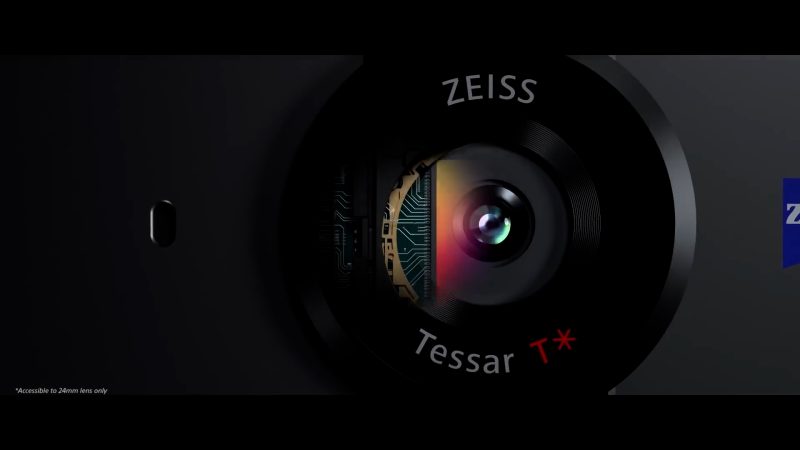
However, the truth is that not all of the 1” sensor gets used, because the lens cannot be placed far enough away from the sensor to cover it. So while it’s a 20MP sensor, it’s only listed as 12MP, which is the same as the iPhone main sensor.
This means that the extra shallow depth of field we might hope for isn’t there and is in fact a little less than the iPhone 13 Pro and Pro Max. That said, the surface area of the sensor used for photos is 59% greater than used by the iPhone 13 Pro’s main camera.
Sony’s Vlog Monitor
Sony has also marketed a second screen called a Vlog Monitor which can be added allowing easier monitoring when filming yourself. So that’s good for vloggers if you can cover the extra cost. Talking of cost, the Sony Xperia Pro-I is not cheap, going for $1800 in the US and £1600 in the UK.
While I think this is a great looking phone (or camera), the claim this gives the best shallow depth of field from a smartphone just isn’t true. I’m yet to really see anything beat my Samsung Note 20 Ultra, to be honest.
That said, to my eyes the Xperia Pro-I does benefit from this 1” sensor when shooting video. There’s a little bit more clarity and less artefacts than you get in other smartphone-shot videos. The detail looks like real detail and not algorithmically, AI enhanced, extra sharpened detail.
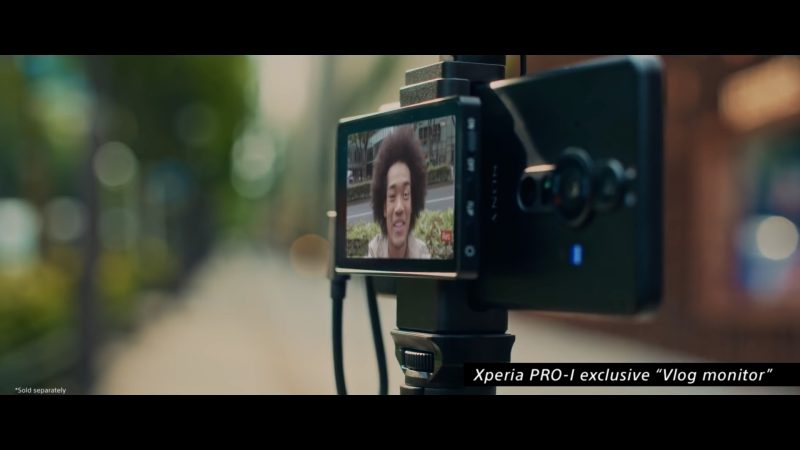
Oh and one last notable feature. This camera-that’s-also-a-phone has a dedicated shutter button on the side.
By the way, if you’re vlogging with your smartphone don’t use the front facing selfie camera. Just don’t. It’s always worse quality, sometimes dramatically worse. Even the Samsung S21 Ultras high quality selfie camera is still not a match for it’s main camera.
I know it’s more convenient for framing. But why would you buy a phone for over $1000 and then use the camera that you’d get in a $300 phone?
3. Samsung range
In 2020, Samsung introduced smartphones capable of shooting in 8K resolution. Nobody had an 8K monitor to watch it on, but still… And the reason for including this feature had nothing to do with Samsung coincidentally selling 8K TVs.
But in seriousness, the S20 and Note20 Ultra devices packed some serious video-shooting punch. Did I mention I still love my Note 20 Ultra? Apart from 8K video, they could also shoot 4K at 60fps, had optical telephoto lenses which beat the iPhone’s and came with their own manual controls in their native app.
What could Samsung do in 2021?
First, they dropped the Note range of devices and included the pen with the S21 Ultra instead. Then they added even more power to the telephoto camera as well as packing the selfie camera with a high quality 40MP sensor. It certainly has the best front facing camera I’ve seen in a smartphone. The device also comes with 2 telephoto lenses, extending the zoom range and allowing up to 10x optical zoom.
One thing I didn’t like was that, to add extra dynamic range, Samsung turned up the computational effects, such as tone mapping. Problem is, on bright contrasty days, this means the S21 Ultra can produce extra digital noise in the shadows.
That said, you can always opt for the tone mapping free Pro Video Mode which gives you a full range of manual controls too. Bear in mind, you then lose that extra dynamic range.
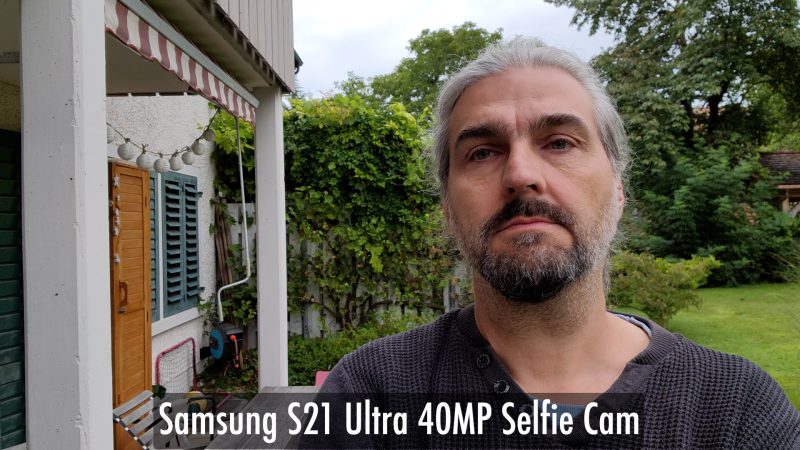
That’s not just with Samsung devices. When you use FiLMiC Pro (or any manual control app) with an iPhone you lose some of that tone mapping too.
4. Xiaomi & Google Pixel ranges
Xiaomi and Google’s Pixel both inhabit that price range just below the iPhones and Samsungs. You’re going to get a good phone with a good camera for a couple hundred bucks less. Do they compete with the iPhone 13 Pro, the Sony Xperia Pro-I or the Samsung S21 Ultra?
In my opinion, not quite. There’s just something a little nasty-digital about the video you get from these devices, with extra sharpening and unflattering details in the portraits.
iPhones and Samsungs also use plenty of computational processing, but to my eyes they do it better. It comes out slightly more natural looking.
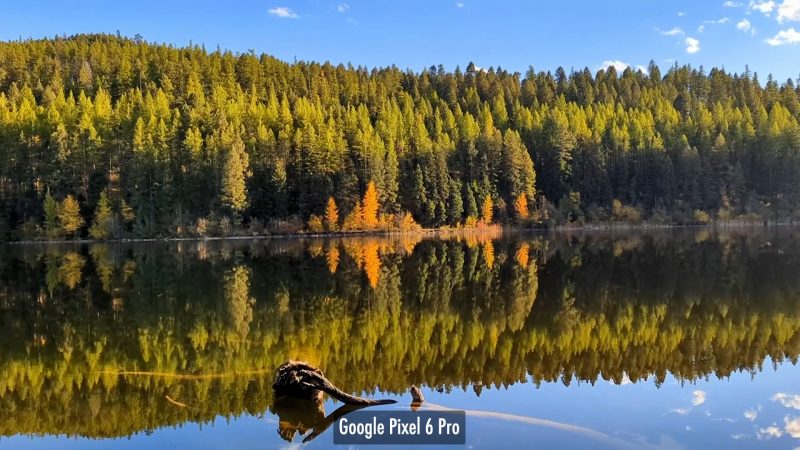
Xiaomi really pushes the filmmaking angle on their phones. They even have a Xiaomi Studios where they invite filmmakers to shoot cinematic short films with their devices. As well, Xiaomi phones come with a Pro Video mode, very similar to Samsung. Except Xiaomi also includes their own Log profile, whereas Samsung doesn’t.
Meanwhile, Google’s Pixel phones are improving all the time. The recent 6 Pro has a very impressive telephoto camera with a long zoom range. But, for me, that’s not the most important feature when I’m shooting video.
That said, both flagships – the Xiaomi Mi 11 Ultra and the Pixel 6 Pro – have large main sensors with great low light performance, as well as adding a shallow depth of field comparable to the more expensive iPhone, Samsung and Sony phones.
Native Manual Control
I’ve found with the Xiaomi devices, like with Samsung devices, using Pro Video mode helps to reduce the digital processing at the expense of some dynamic range. As well, the Pixel 6 range seems to work pretty well with apps like FiLMiC Pro, which you can use instead of the Pro Video mode.
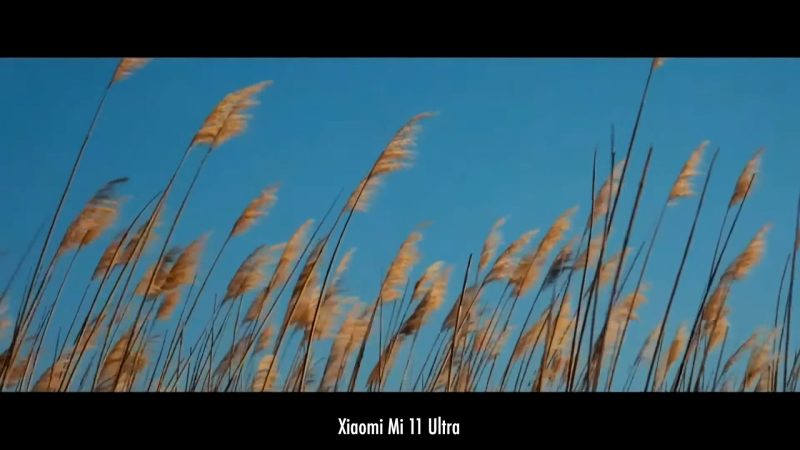
One neat little innovation on the Xiaomi Mi 11 Ultra is the inclusion of a little monitoring screen on the back of the phone, which allows you to frame yourself while using the much better quality main camera. But one of the big complaints about this feature was that it only works in photo mode and that still seems to be the case. Which is a shame because that would be very useful for people using their smartphone for vlogging purposes.
When it comes to faster frame rates, the Xiaomi Mi 11 Ultra & Pixel 6 Pro match the top flagship devices in being able to capture 4K video up to 60fps. The Xiaomi Mi 11 also has 8K video capability at 24fps, while the Pixel doesn’t.
Best Android for FiLMiC Pro?
Now if you are a FiLMiC Pro user, the Google Pixel 6 Pro might interest you. When the Pixel was first introduced back in 2016, FiLMiC said it was their favourite Android device. And it seems the love affair continues, as FiLMiC Pro is able to get more out of the 6 Pro than Google’s own native camera app – which is quite unusual.
Using FiLMiC Pro, you are able to turn off the noise reduction and the digital sharpening. As well, you’re able to shoot 4k 60fps on all cameras, while in the Google camera app you can only shoot 60fps at 4K with the main camera. On the down side, you cannot use the cinekit on this device, so no FiLMiC Pro Log.
This is worth noting, as Samsung has recently been more restrictive in what they allow 3rd party apps access to. In fact, in Samsung’s own pro mode you cannot even access the tele lenses, for example.
So if you’re a FiLMiC Pro and Android fan, then the Google Pixel 6 Pro might be your best bet.
5. OnePlus 9 Pro
OnePlus is another company like Xiaomi that likes to push the filmmaking side of their devices. While they started to get some traction in that area around about the OnePlus 7, they started to fall behind the competition. To try to win back some of the camera phone territory, in 2021 OnePlus teamed up with Hasselblad for their OnePlus 9 Pro.
So why is nobody talking about the OnePlus 9 Pro now?
It seems that OnePlus has not jumped on the dynamic tone mapping bandwagon, like Samsung and Apple. This means their photos and videos appear to have less dynamic range in comparison. In other words, they tend to look like iPhones and Samsungs when the tone mapping is reduced or turned off.
As well, their inbuilt stabilisation just doesn’t match the OIS (optical image stabilisation) of the big flagships. Of course the 9 Pro comes at a lower cost (although still £900 in the UK), but the OnePlus 9 Pro does not match the photography and cinematography capabilities of it’s 2nd tier rivals, like the Mi 11 Ultra and the Pixel 6 Pro.
6. Vivo X70 Pro+
The Vivo X70 Pro and Pro+ are devices that are not exactly cheap, but they’re not the most expensive either. This device comes with 4 cameras: a main wide, an ultra wide, a 2x telephoto and a 5x periscope telephoto.
On the Pro+ the main camera has a Sony 50MP main sensor with a f1.6 aperture, which is nice and fast. In photography terms, fast means big. Which means better low light performance and shallow depth of field.
The lenses use Zeiss optics and coating. The quality from this device is pretty good, with some eye-catching high contrast video as well as impressive low light performance. But compared to the iPhone 13 Pro, the quality of the video is less filmic and doesn’t match in all areas.
This extra contrast might make the video jump out of your phone screen, but doesn’t necessarily look good on other screens.
This device also has Pro Video mode and an 8K video shooting option, except this time at 30fps instead of 24fps. I would prefer 24fps to keep closer to the film look, myself. The X70 Pro+ can shoot at 4K up to 60fps.
7. Oppo Find X3 Pro
Oppo built themselves a niche early on as a budget alternative with some of the best video shooting capabilities and was another on FiLMiC’s fav list. But the Oppo Find X3 Pro, released in March 2021 is not really a budget model. In the UK the device was priced at £1099 on first release, so that puts only a little way behind an iPhone 13 Pro or Pro Max.
The Find X3 Pro has really strong videography features. One interesting feature of this device is the fact it has 2 high quality cameras rather than one.
With most smartphones the main camera is much better quality, which becomes apparent in low light situations. But with the X3 Pro both the main wide and the ultra wide cameras have basically the same quality sensor. This means you can switch between the cameras without worrying about loss of quality.
There’s also a telephoto option with 2x optical zoom and up to 20x digital zoom. In this respect, the device is maybe a little underwhelming for the price. For frame rates, we can be happy with 4K at up to 60fps and 1080p at up to 240fps.
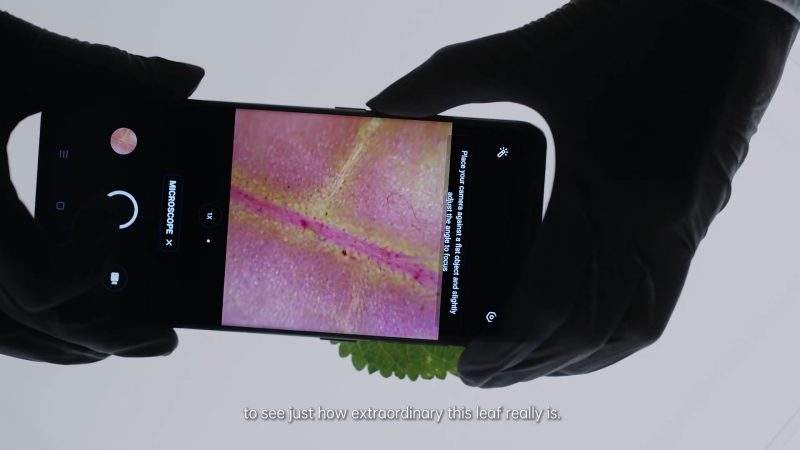
The last of the 4 cameras is a 3MP macro camera which captures close ups at a microscopic level. I don’t think you’d use that too often for videography, but fun to have anyway.
The Oppo Find X3 Pro has its own pro mode called Movie Mode which comes with a Log colour profile. There’s some missing features such as a fixed widescreen aspect ratio and no 4K 60fps video, however.
All in all, this is a nice device and I’m pretty impressed with the colours and the overall quality it produces.
8. Huawei
Huawei are a Chinese tech manufacturer who were making the kind of impact that Xiaomi is now making. Before they got banned in America that is, as well as blocked from the Google Play store. Which is a major of a drawback for an Android device.
But are Americans missing much? No, I don’t think they are. At least, when it comes to shooting video.
That’s not to say the latest Huawei flagship, the P50 Pro, isn’t very good at shooting video. Because it is. But for the price I would put it on a par with the other devices here which sit just below the major Apple, Samsung and Sony flagships.

To my eyes, the smartphone video also still comes out heavily processed. And that tone mapping really pushes extra noise into the darker areas of the video in bright daylight.
One feature about the P50 Pro which is a bit different is the slow motion, which can output 960fps slowed to 30fps at 1080p. In comparison, the Samsung S21 Ultra still limits 960fps video to 720p.
Other than that, I think it has very decent cameras. But nothing you can’t get from comparable devices in the same price range.
9. LG range
LG is also a company that made an effort to provide features for filmmakers, such as Pro Video mode and Log colour profiles. So what have they brought us in 2021?
Well, nothing. Turns out LG has decided to stop making smartphones altogether. The LG V60 which was released in March 2020 is the last in the V range, which was the more filmmaker oriented.
We have to give LG credit for trying out weird and wonderful designs, such as the LG WING Aurora. But that aside, that is the end of smartphones from LG.
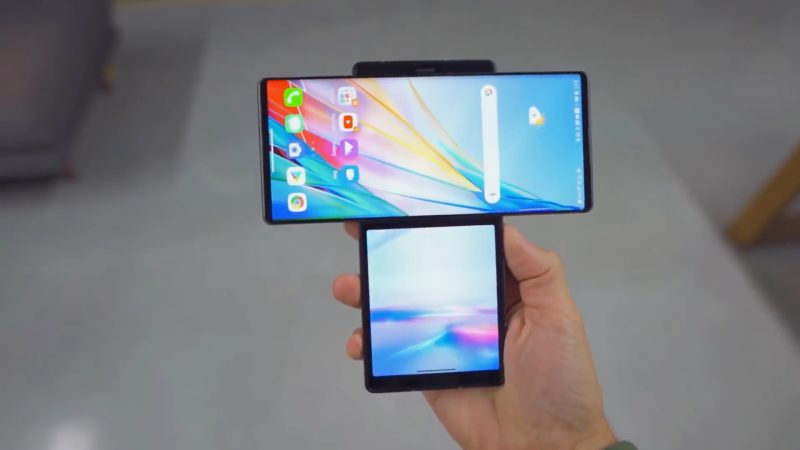
Smartphone Video – Beginner to Advanced
If you want to know more about smartphone filmmaking, my book Smartphone Videography – Beginners to Advanced is now available to download for my members on Patreon. The book is 170 pages long and covers essential smartphone filmmaking topics:
Things like how to get the perfect exposure, when to use manual control, which codecs to use, HDR, how to use frame rates, lenses, shot types, stabilisation and much more.
Members can also access all 5 episodes of our smartphone shot Silent Eye series, with accompanying screenplays and making of podcasts. There’s other materials too and I will be adding more in the future.
If you want to join me there, follow this link.
Simon Horrocks
Simon Horrocks is a screenwriter & filmmaker. His debut feature THIRD CONTACT was shot on a consumer camcorder and premiered at the BFI IMAX in 2013. His shot-on-smartphones sci-fi series SILENT EYE featured on Amazon Prime. He now runs a popular Patreon page which offers online courses for beginners, customised tips and more: www.patreon.com/SilentEye


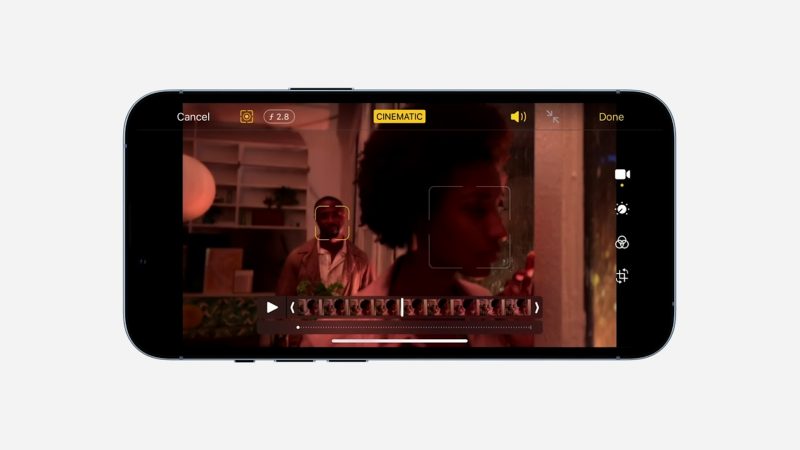
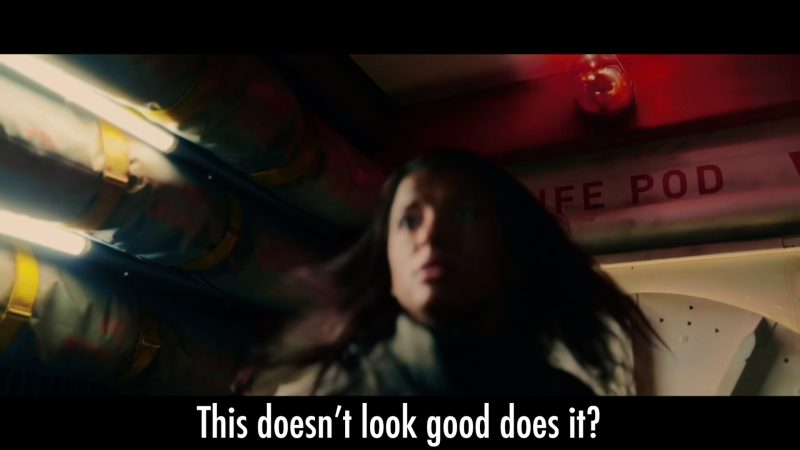
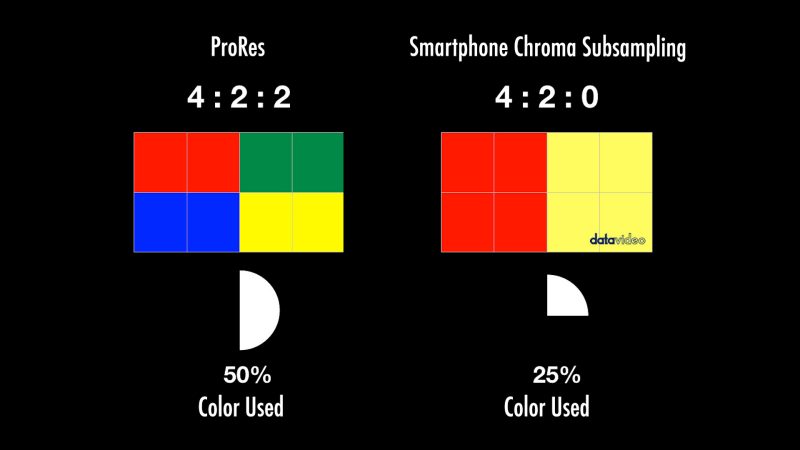
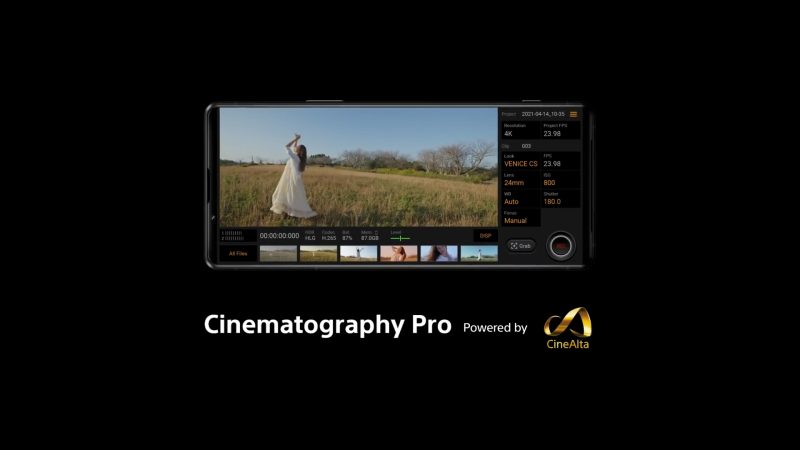
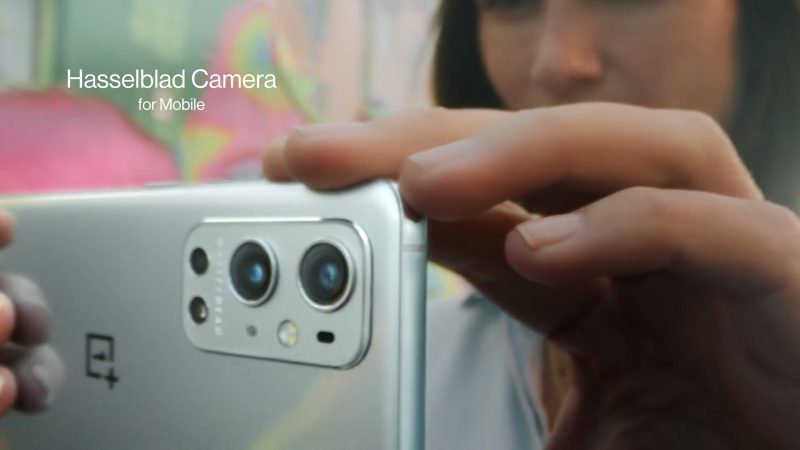
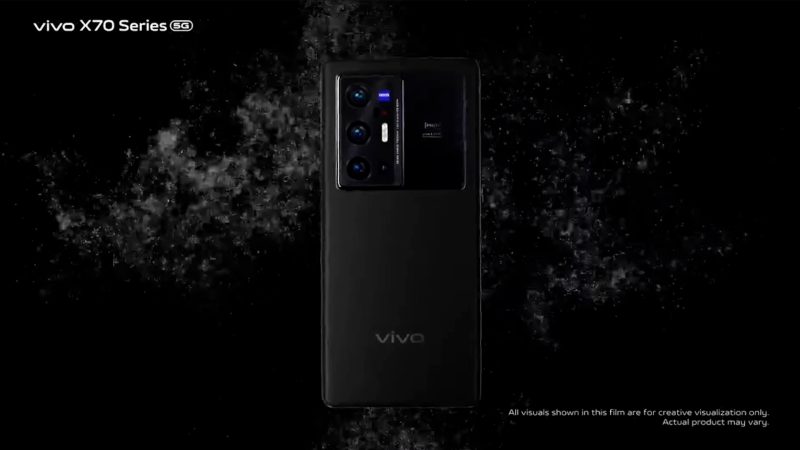
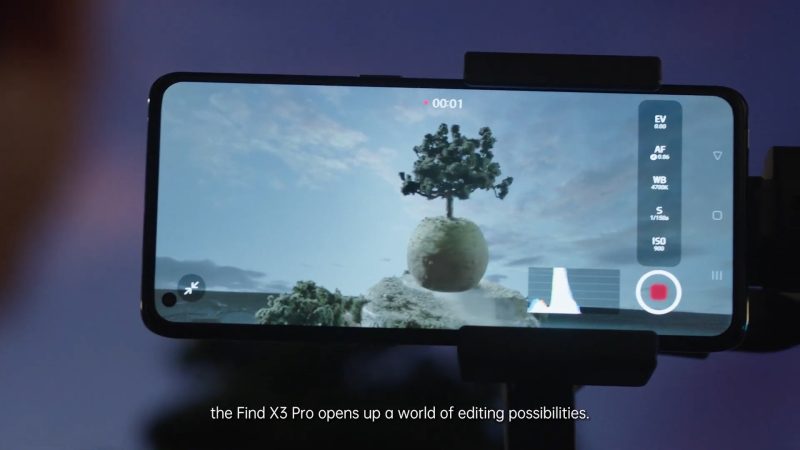
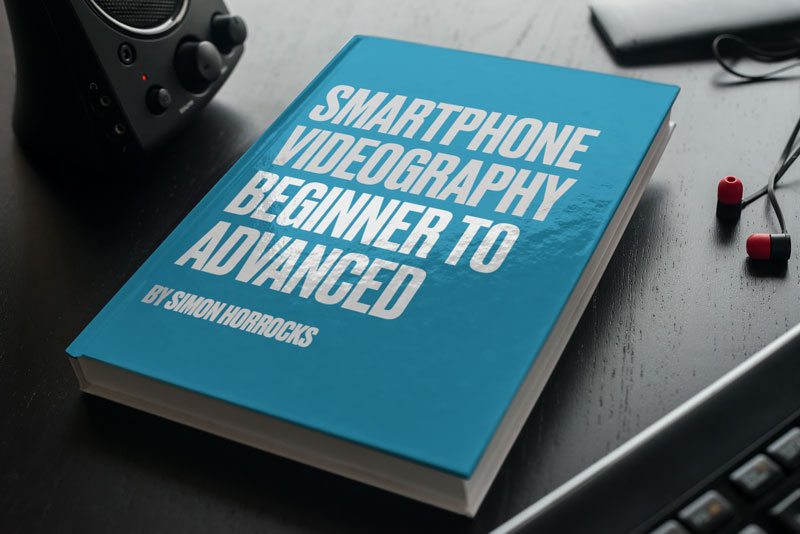
Hey some great info here…! What would be you choice for a short film as demo for a movie script, not many movements on the short one, mainly dialogues…?
Can your ebooks be purchased and downloaded or only accessed and viewed through Patreon? (ie. no download)
hi Al, currently they can only be accessed and downloaded via Patreon.